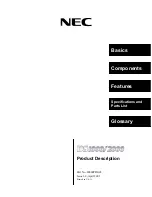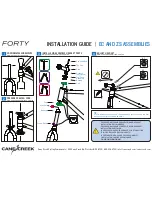
1.6 Hold the front part of the left liner and pull it upwards in order to remove the liner flap
from the support fixed to the inner polystyrene shell (Fig. 17). Repeat the same steps
to remove the central and right front flap.
1.7 Completely remove the liner from the helmet.
ASSEMBLY
2.1 Insert the liner correctly into the helmet and fit it well against the base.
2.2 Insert the left front flap into the seat on the support fixed to the polystyrene inner shell
and push it slightly downwards until it is completely locked (Fig. 17). Follow the same
steps even with the central and right front flap.
2.3 Insert the rear right, central and left flaps of the liner into the relevant support seats
in the helmet neck-ring area (Fig. 16). To perform this step, act as follows: slightly
deform the shell sealing edge and push the flaps until they are completely hooked
to the support.
2.4 Hook the roll-neck eyelet to the frame fixed to the outer shell (Fig. 15), making sure
that the frame central hole is free.
2.5 Carefully adjust the liner until it adheres well to the shell.
N. B.: Check the correct assembly of the liner front area by lifting and lowering the
VPS. These movements should be smooth. In this is not the case, repeat the steps
1.6 and 2.2.
CHEEK PAD ASSEMBLY
2.6 Insert the band and the left chin strap into the slot of the left cheek pad.
2.7 Put the left cheek pad against the polystyrene inner cheek pad and push the padding
near the 3 snap buttons on its back in order to fasten them to their seats (Fig. 14).
2.8 Repeat these steps with the padding of the right cheek pad.
WARNING!!!
- Remove the padding only when cleaning or washing is required.
- Never use the helmet if the inner comfort padding and the cheek pads have not been
correctly and completely restored.
- Delicately hand-wash in lukewarm water (max. 30°C) and neutral soap.
- Rinse off with cold water and dry up at room temperature away from direct sunrays.
- Never machine-wash the inner comfort padding.
- The inner polystyrene is an easily deformable material, in fact it is apt to change or get
partially destroyed to help absorb shocks.
- Use a wet cloth to clean it and let it dry at room temperature away from direct sunrays.
- Do not modify the helmet's internal polystyrene components in any way.
- Never use tools or equipment of any sort to carry out the steps described above.
17
Summary of Contents for N103
Page 91: ...91 E v fi fi fi fi fi fi fi fi fi fi fi fi fi fi fi fi fi fi fi fi fi fi fi fi fi fi fi A...
Page 98: ...Fig 1 Fig 2 Fig 3 Fig 4 Fig 5 Fig 6 Fig 7 Fig 8 Fig 9 B1 B2 B2 B1 A D C MIN MAX...
Page 99: ...Fig 10A Fig 10B Fig 11 Fig 12A Fig 12B Fig 13...
Page 100: ...cod ISTR000000051 Fig 14 Fig 15 Fig 16 Fig 17...
















































